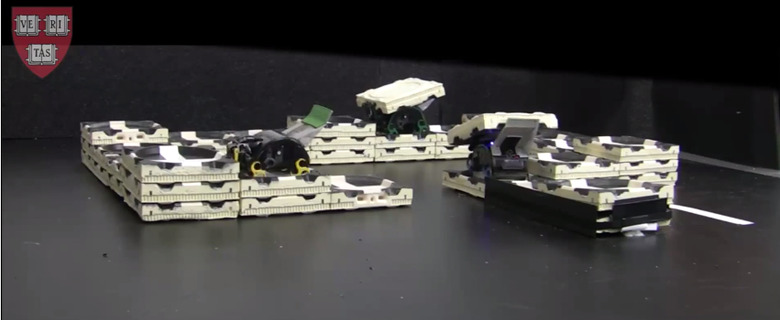Robo-Termite Builders Could Colonize Mars Without Our Help
Robotic termites capable of building complex structures without requiring human supervision, prior programming, or even intercommunication could change the way construction, emergency services, or even space exploration are managed, borrowing swarm behaviors from nature. The TERMES project, handiwork of the self-organizing systems research group at Harvard University, has taken four years to create a scalable artificial intelligence system made up of simplistic robots that together can create towers, pyramids, and castles, even erecting temporary staircases to allow them to climb higher.
The research takes a different approach to collaborative working than most human or robotic projects might. Whereas it's usual to see a so-called hierarchical system of organization implemented – where a core plan is filtered down through tiers of managers and finally to teams who each know how their portion of the project fits into the greater whole – insect colonies come at their own construction in individual isolation, with no centralized plan.
That, the Harvard team explains, is known as stigmergy, or implicit communication, where real-time changes in the surrounding environment are recognized and each individual's plan is adjusted accordingly. TERMES robots can operate in a swarm of just a few units, or potentially hundreds or even thousands, all working on a generalized task but not communicating progress with each other.

Instead, as each encounters a different stage of the overall process, it does whatever it deems necessary to place its foam "brick" in the right place. The absence of a centralized hub to manage all of the robots means there's no one single point of failure – if a robot breaks, the others carry on irregardless – and it also makes the robots themselves more simplistic and cheap to produce. With no radios or complex processing, they can make do with just four sensors and three actuators, yet still scale structures, as well as carry and attach blocks.
TERMES could open the door to swarms of construction robots brought in to quickly and reliably deal with emergency situations, such as laying down sandbags in flood conditions, the Harvard researchers suggest. More excitingly, perhaps, they could be used as a vanguard for space exploration, sent out to build habitats on Mars or other distant planets in advance of human colonists.
There, the ability to react autonomously to the surrounding environment, rather than rely on remote instructions sent from Earth, could make such projects far more efficient, not to mention successful.
Of course, we can think of a few good uses closer to home: packaging a small swarm of robo-termite builders in each IKEA box, for instance, to put together that pesky flat-pack.
